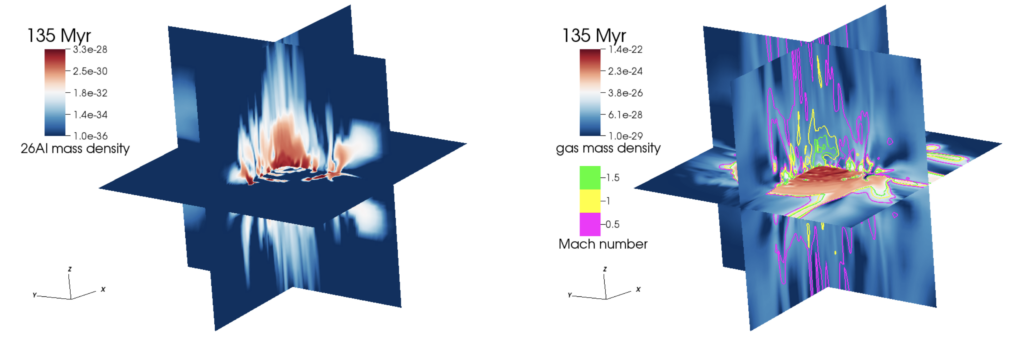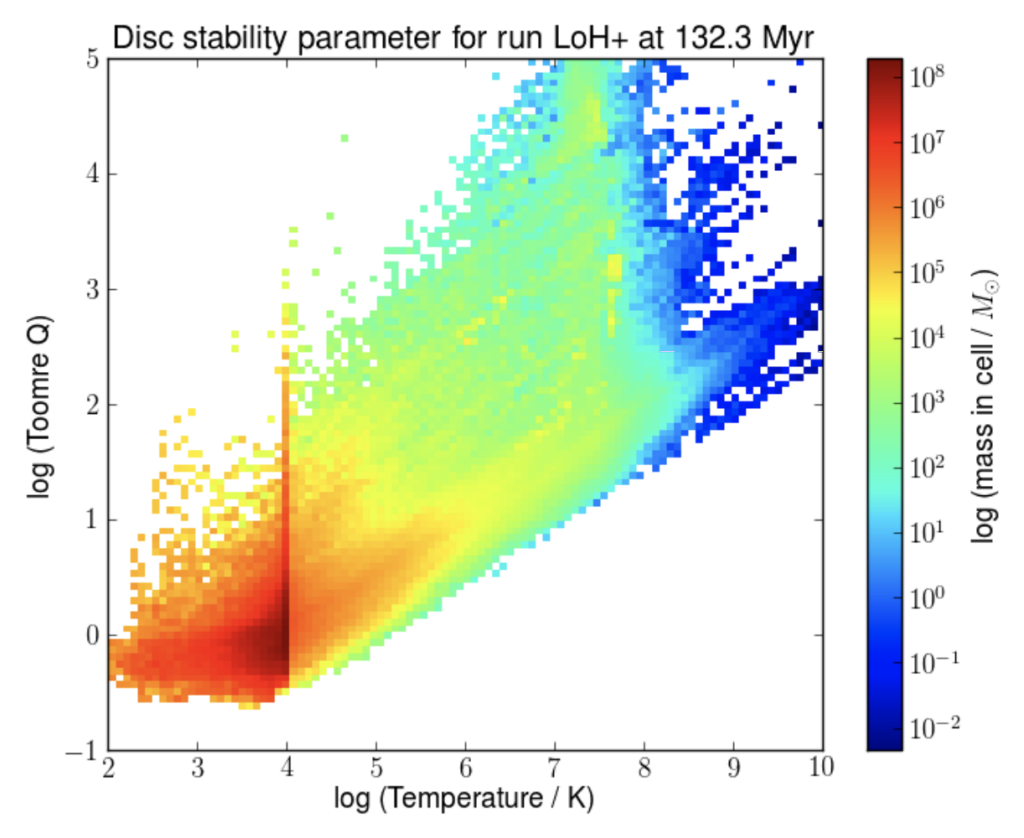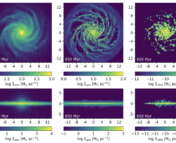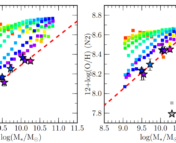Title: Galactic 26Al traces metal loss through hot chimneys
Authors: Martin G. H. Krause, Donna Rodgers-Lee, James E. Dale, Roland Diehl, and Chiaki Kobayashi
First Author’s Institution: Centre for Astrophysics Research, Department of Physics, Astronomy and Mathematics, University of Hertfordshire, College Lane, Hatfield, Hertfordshire AL10 9AB, UK
Status: Accepted for publication in MNRAS, open access on arXiv
Making Metals
Carl Sagan famously said of humans, “We’re made of star stuff.” What he means is that most metals in the universe are forged in stellar interiors. These metals eventually get mixed into the surrounding gas through stellar winds or when the stars die. However, recent studies suggest that the majority of metals produced in stars actually leave galaxies and enrich the circumgalactic and intergalactic medium. One way to probe the creation and transport of metals from stars is through the observations of radioactive isotopes. Because these species have short lifetimes, their detection allows us to trace the recent history of stellar ejecta.
26Al in particular, with a half-life of about 1 million years, has been used to trace metal production. It is commonly seen throughout the Milky Way, observed through an emission line at 1.8 MeV in the gamma-ray energy band. Due to its overall diffuse, yet clumpy, nature throughout the Galaxy, it is thought that 26Al is produced in massive stars. These massive stars live in the Galactic disk and eject metals throughout their lives in intense stellar winds and when they die as supernovae. Measurements of 26Al have also been made a bit closer to home. In some early meteorites, 26Mg (a decay product of 26Al) has been detected. This means that massive stars must have been nearby to enrich the gas that eventually formed the Solar System.
The detection of 26Al in both a hot gas phase throughout the Galaxy and in our own backyard tells us that metal production in massive stars must be sufficient to both spread throughout the Galaxy and to mix in locally with cold gas that will form stars.
Modeling a “Milky Way”
With this in mind, the authors of today’s paper set up a simulation of a Milky Way-like galaxy. The authors use 3D simulations that inject star forming regions into an isolated disk galaxy (complete with a dark matter halo, bulge, and spiral arms) and trace the evolution of 26Al and gas properties. The parameters of the simulation were chosen to roughly match the mass, morphology, and star formation rate of the Milky Way.
One of the main results that the authors find is that relatively soon after star formation begins, large-scale winds can be seen both in 26Al and hot gas. Figure 1 shows a snapshot of these conditions. A wind traced by 26Al and hot gas can be seen extending almost 20 kpc from the galactic center. By mixing processed stellar material throughout the galaxy with these winds, it is possible to enrich the circumgalactic medium. Additionally, this suggests that even galaxies like the Milky Way with modest star formation can still have large stellar-driven winds that affect their environment.

Another interesting result of these simulations is that there is both a hot and cold phase of the 26Al mass in the galaxy. The 26Al associated with hot gas continues to leave the galaxy in winds, but the cold component remains available to mix into gas for new star formation. This can be seen in Figure 2. Here, we see that massive clouds of cold gas are unstable to collapse, and may form stars, while the hot component is stable to collapse. While expected from the fact that more recent generations of stars have higher metal contents than previous generations, the presence of 26Al gas shows that this enriched gas can quickly be remade into stars.

From these simulations, it is clear that metals produced in massive stars can be both ejected from the galaxy itself in large winds, but also continue to enrich future generations of new stars. In either case, the presence of 26Al indicates that these processes happen quickly. These simulations help explain both the enrichment of gas surrounding galaxies as well as the increased metallicity in the younger Population I stars. As future observations of galaxies and their environments are conducted, we can continue to put these predictions into the context of galaxy evolution as a whole.
Edited by: Ali Crisp
Featured Image Credit: NASA




